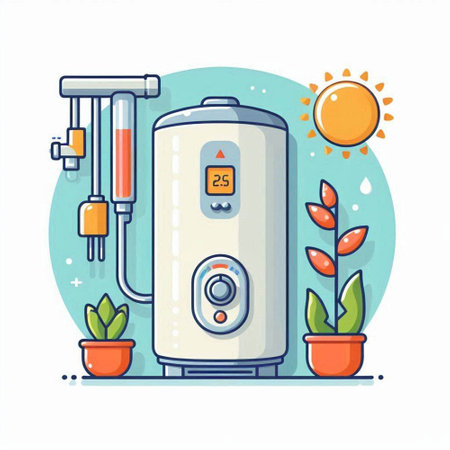Introduction to Fish Tank Filtration
Keeping your fish tank clean and healthy is more than just an aesthetic choice—its essential for the well-being of your aquatic pets. Filtration plays a vital role in maintaining water quality by removing waste, excess food, and harmful chemicals that can build up over time. Without proper filtration, toxins like ammonia and nitrites can quickly reach dangerous levels, putting the health of your fish at serious risk. In American homes, where aquariums are often a centerpiece of décor, investing in a good filtration system ensures not only crystal-clear water but also a stable environment where your fish can thrive. Whether you’re new to aquarium keeping or a seasoned hobbyist, understanding the importance of filtration is the first step to creating a balanced ecosystem that supports the long-term health of your aquatic friends.
2. Types of Filtration Systems
When it comes to keeping your fish tank clean and healthy, understanding the different types of filtration systems is crucial. There are three primary types of filtration used in aquariums: mechanical, chemical, and biological. Each type plays a unique role in maintaining water quality and supporting the well-being of your aquatic pets. Here’s a breakdown of how each system works within a typical fish tank setup:
Mechanical Filtration
Mechanical filtration is the first line of defense for your aquarium. It works by physically removing debris such as uneaten food, plant matter, and fish waste from the water as it passes through filter media like sponges or pads. This process helps keep the water clear and prevents larger particles from breaking down and affecting water quality.
Chemical Filtration
Chemical filtration targets dissolved impurities in your tank water. The most common method involves activated carbon, which absorbs toxins, discoloration, and odors that mechanical filters can’t catch. Some chemical filters also use resins to remove specific contaminants, such as ammonia or phosphates. This step ensures your aquarium water remains crystal clear and free from harmful substances that could stress or harm your fish.
Biological Filtration
Biological filtration is vital for establishing a healthy ecosystem inside your tank. Beneficial bacteria colonize filter media—like bio balls or ceramic rings—and break down toxic ammonia and nitrite (produced by fish waste) into less harmful nitrate through the nitrogen cycle. This process is essential for long-term stability and the health of your aquatic life.
Filtration System Comparison Table
| Type | Main Function | Common Media | Benefits |
|---|---|---|---|
| Mechanical | Removes solid debris | Sponges, filter pads | Keeps water clear, reduces clogging |
| Chemical | Removes dissolved chemicals & odors | Activated carbon, resins | Eliminates toxins, improves clarity |
| Biological | Breaks down ammonia & nitrites | Ceramic rings, bio balls | Maintains stable ecosystem, supports fish health |
Most modern aquarium filters combine all three filtration types for optimal results. By understanding how each system works together, you can choose the right filter for your setup and ensure a safe environment for your fish to thrive.

3. Popular Filter Options for Home Aquariums
When it comes to keeping your fish tank clean and healthy, choosing the right filter is crucial. In the United States, several types of aquarium filters are popular among hobbyists, each with its own strengths and limitations. Understanding these options will help you pick the best fit for your setup.
Hang-On-Back (HOB) Filters
Hang-on-back filters are a favorite choice in American homes because they’re easy to install and maintain. These filters hang on the rim of your aquarium and draw water through a media cartridge that provides mechanical, chemical, and sometimes biological filtration.
Pros:
- Simple setup and maintenance
- Affordable and widely available
- Good for tanks up to medium size
Cons:
- May not be powerful enough for large tanks
- Visible outside the tank, which some find unattractive
Canister Filters
Canister filters are popular for larger aquariums or when you want superior filtration. These external units offer customizable media options and strong water flow, making them ideal for planted tanks or fish that need pristine water.
Pros:
- Excellent filtration capacity (mechanical, biological, chemical)
- Customizable filter media
- Quiet operation when set up properly
Cons:
- More expensive than HOB or sponge filters
- Takes up space under or next to the tank
- Requires more effort to maintain
Sponge Filters
Sponge filters are a go-to solution for breeding tanks, shrimp setups, and quarantine tanks in the US. They operate using an air pump to pull water through a sponge that houses beneficial bacteria.
Pros:
- Gentle water flow—great for fry and delicate species
- Excellent biological filtration
- Budget-friendly and simple to clean
Cons:
- Limited mechanical and no chemical filtration
- Not suitable as the sole filter for larger or heavily stocked tanks
Internal Filters
Internal filters sit inside the aquarium and provide basic mechanical and biological filtration. These compact units are often used in smaller tanks or as supplemental filters.
Pros:
- Compact and easy to hide inside the tank
- No need for extra tubing or external parts
Cons:
- Takes up space inside the aquarium
- Usually less powerful than canister or HOB filters
Selecting the right filter style depends on your tank’s size, inhabitants, and personal preferences. By weighing the pros and cons of each type, you’ll be well-equipped to maintain a healthy aquatic environment in your home.
4. How to Choose the Right Filter for Your Tank
Selecting the appropriate filter for your fish tank is crucial for maintaining a healthy aquatic environment. American hobbyists often face the challenge of finding a filter that suits their unique setups, from cozy 10-gallon betta tanks to sprawling 75-gallon community aquariums. Here’s what you need to know when picking the right filtration system.
Consider Tank Size
The size of your aquarium is the first thing to consider. Filters are typically rated by the number of gallons they can effectively process per hour (GPH). A good rule of thumb is to choose a filter that can cycle all the water in your tank at least four times per hour.
| Tank Size (Gallons) | Recommended GPH | Filter Type Suggestions |
|---|---|---|
| Under 20 | 80+ | Sponge, Hang-on-Back (HOB) |
| 20–55 | 100–220 | HOB, Canister |
| 55+ | 220+ | Canister, Sump |
Factor in Fish Species and Stocking Level
Certain fish create more waste than others. For example, goldfish and cichlids are notorious for being messy, while bettas and tetras have lighter bioloads. Heavily stocked tanks or those with large, active fish will need more powerful filtration to maintain water quality. If you keep delicate species or fry, gentler filters like sponge filters are often preferred.
Common Scenarios:
- Bettas/Small Tanks: Sponge or gentle HOB filters to avoid strong currents.
- Tropical Community Tanks: HOB or canister filters for balanced chemical and biological filtration.
- Cichlid or Goldfish Tanks: Robust canister or sump systems for heavy waste management.
Match Special Needs and Preferences
If you’re an aquascaper or plant enthusiast, you might want a filter that doesn’t disturb CO2 levels too much—canister filters with adjustable flow rates are popular here. For saltwater setups common in some U.S. homes, sumps offer flexibility and space for protein skimmers and other equipment. Consider noise level too if your tank is in a living area; sponge and modern canister filters tend to be quieter than older HOB models.
Key Takeaway:
The right filter depends on your tank’s size, the species you keep, stocking density, and any special requirements you may have. Don’t hesitate to ask staff at your local fish store or check reputable online forums for advice tailored to your specific needs as an American aquarium hobbyist.
5. Routine Maintenance Tips
Maintaining your aquarium filter is crucial for a healthy and thriving fish tank. Sticking to a consistent cleaning schedule ensures your filtration system works efficiently and keeps your aquatic environment safe. Here are some best practices for keeping your filter in top shape:
Establish a Cleaning Schedule
It’s important to clean your filter components regularly, but avoid over-cleaning, which can disrupt beneficial bacteria. Most hobbyists find that rinsing mechanical filter media every 2-4 weeks in old tank water (not tap water) is ideal. Biological media should be gently swished in tank water during monthly maintenance to preserve the bacterial colonies essential for breaking down waste.
Replace Media When Needed
Chemical media like activated carbon or ammonia-removing pads should be replaced every 3-4 weeks, depending on your tank’s bioload and manufacturer recommendations. Mechanical sponges and pads can last several months, but replace them if they start falling apart. Biological media generally lasts much longer, but watch for signs of clogging or excessive buildup.
Watch for Warning Signs
Your filter might need attention if you notice reduced water flow, unusual noises, cloudy water, or unpleasant odors from the tank. These issues often indicate clogs or worn-out media that require immediate cleaning or replacement. Ignoring these signs could lead to poor water quality and stressed fish.
Quick Tips for Filter Care
Always unplug your filter before maintenance to stay safe. Use dechlorinated water for rinsing filter parts to protect beneficial bacteria. Keep an extra set of filter media on hand so replacements are hassle-free. Remember, a well-maintained filter not only keeps your fish healthy but also saves you time and money in the long run.
6. Common Filtration Mistakes to Avoid
Even experienced aquarium enthusiasts in the US can fall into common filtration traps that impact the health of their fish and the overall success of their tanks. Recognizing these mistakes—and knowing how to prevent them—can make all the difference in maintaining a clean, vibrant aquarium.
Overcleaning or Undermaintaining Filters
One major pitfall is either cleaning filters too often or neglecting them altogether. Overcleaning, especially with tap water, can destroy beneficial bacteria essential for biological filtration. On the flip side, failing to rinse filter media regularly can cause clogs and reduce water flow, stressing your aquatic pets. The key is to rinse filter media gently in tank water during regular water changes and replace only part of the media at a time.
Using the Wrong Filter Type
Many US fish keepers select filters based solely on price or popularity, not considering their specific tank size or inhabitants’ needs. Using an underpowered filter can lead to poor water quality, while an oversized one might create excessive current, overwhelming your fish. Always match your filter to your tank’s volume and resident species, taking into account bioload and desired flow rate.
Ignoring Routine Maintenance Schedules
Skipping scheduled maintenance is another frequent error. Set calendar reminders for routine checks: inspect impellers, hoses, and sponges for debris or buildup every few weeks. Regular upkeep helps prevent breakdowns and keeps filtration running efficiently.
Neglecting Water Testing
Some aquarists assume that a working filter means healthy water, but invisible toxins like ammonia and nitrite can still build up. Test your water parameters regularly to catch issues early—even with top-tier filtration systems in place.
Avoiding Chemical Overuse
Relying too heavily on chemical filter media or additives can mask underlying problems instead of fixing them. Focus first on proper mechanical and biological filtration; use chemical media sparingly and only when necessary.
By staying mindful of these common mistakes and following best practices tailored to US aquarium conditions, you’ll create a safer, cleaner environment where your fish can thrive.
7. Conclusion and Additional Resources
Maintaining a healthy fish tank starts with understanding the importance of proper filtration. To recap, mechanical, biological, and chemical filtration each play a vital role in keeping aquarium water clean and safe for your aquatic pets. Choosing the right filter depends on your tank’s size, fish population, and specific needs. Regular maintenance—such as cleaning filter media and monitoring water quality—ensures your system works efficiently and supports a thriving aquatic environment. For more detailed guidance and up-to-date advice tailored to American hobbyists, check out trusted resources like Aqueon, FishLore, and the Aquarium Co-Op Blog. These sites offer expert tips, product recommendations, and community support to help you succeed in your fishkeeping journey.


